- Established 1982 -HOME: www.hiltonpond.org
THIS WEEK at HILTON POND Subscribe for free to our award-winning nature newsletter (Back to Preceding Week; on to Next Week) |
ANOTHER LONG-DISTANCE SISKIN,
All text, maps, charts & photos © Hilton Pond Center The winter of 2020-21 was one for the ages for finch enthusiasts. It brought a memorable irruption of Pine Siskins, Spinus pinus (above), that mobbed backyard feeders across the eastern U.S. and broke the bank on thistle and sunflower seed purchases. These little relatives of American Goldfinches, S. tristis, breed out west and along the U.S.-Canada border as far north as boreal forests of southern Alaska. Some years PISI stay put and don't even show up at more southerly locales but in winters when the tree seed crop fails up north they come to the Carolinas--sometimes in surprisingly large numbers. All text, maps, charts & photos © Hilton Pond Center The influx of Pine Siskins at Hilton Pond Center in 2020-21 was unprecedented, with 1,316 banded (see chart above)--nearly twice our previous high of 780 from 2014-15 and more than a magnitude greater than our then-40-year average of 115. We likely would have banded a few dozen more except we took an unexpected week off as we ran out of bands and had to wait for more to arrive from the federal Bird Banding Lab. Despite several "big" years, the chart above reveals the Center had many winters when we banded few to no siskins at all.
All text, maps, charts & photos © Hilton Pond Center Having banded so many Pine Siskins in 2020-21, we expected sooner or later at least a few would be encountered elsewhere, either recaptured by another bander or found by a homeowner up north or out west. In previous years (see GREEN notations on map below) we've had siskins from Hilton Pond appear in Ontario (two individuals), Massachusetts, North Carolina, and Georgia--plus two banded here a year apart and recaptured an hour apart in Duluth MN. We also recaptured one siskin banded in Maryland (in RED on the map). All text, maps, charts & photos © Hilton Pond Center This past December we got the almost unbelievable report one of our Hilton Pond Pine Siskins banded on 26 March 2021 had been found dead at Auburn in Washington State--2,263 straight-line air miles from the Center! (See longest GREEN line on map above.) It seems likely this PISI (#2890-21380, banded as an after-hatch-year bird of unknown sex) migrated to York SC during the big irruption year of 2020-21 but stayed closer to "home" for the next winter of 2021-22. This was stunning news as we learned a little finch that weighed 15 grams--about the same as a compact disc (or three nickels)--left a failed seed crop in the Great Northwest in the winter of 2020-21, somehow found our cornucopia of sunflower and thistle in York SC, and returned to the Seattle area for a round-trip of at least 4,500 miles. We find all this to be mind-boggling. But wait! We'd like to boggle minds even more! We just got another of those elusive "Report to Bander" e-mails from the Bird Banding Lab that means someone encountered one of our banded birds. Such reports don't come often; with more than 76,300 birds banded at Hilton Pond we've only received 116 of them, and 46 were for birds found nearby (within York County SC). Long-distance encounters are more exciting, of course, since they tell us when a bird travels a greater distance from the Center--usually between wintering and breeding ranges, as with those Pine Siskins described above. All text, maps, charts & photos © Hilton Pond Center Our latest report (above) was for yet another Pine Siskin (#2890-21136), also banded at Hilton Pond Center during the irruption winter on 02 March 2021 as second-year bird of unknown gender. This bird was found dead on 20 June this year at . . . wait for it . . . Anacortes--once again in Washington State! (See top line on map below.) At 2,297 straight-line air miles this location was about 34 miles further away than that for the previous PISI at Auburn WA; as such, it becomes the furthest distance traveled for a bird banded at the Center. By now a third-year bird, this latest Pine Siskin was reported by Toni Fielder at a location roughly halfway between Seattle and Vancouver--about as far west in the contiguous U.S. a land bird can fly. All text, maps, charts & photos © Hilton Pond Center Mind-boggling they are, these reports of our two long-distance Pine Siskins. It's hard to imagine what internal forces led such small birds to offset food shortages on their probable nesting grounds by flying all the way across the North American continent and then returning home to roost and breed--but it obviously works. With the longevity record for a Pine Siskin documented at nine years, it's possible even more PISI banded at the Center in that big irruption winter of 2020-21 will be encountered elsewhere. Oh, the things we'd never know about wild birds at Hilton Pond if we didn’t place bands on their legs to track them in migration--AND if the general public didn't take initiative to report bird encounters to the Bird Banding Laboratory. Thanks to Tori Fielder and others who have done just that. All text, maps, charts & photos © Hilton Pond Center HUMMER SUMMER FUNDER 2022 ANNOUNCEMENT: In late July we banded Hilton Pond Center's 7,000th Ruby-throated Hummingbird. That partially gorgeted young male (photo below) is another milestone in our 39-year study of these tiny feathered dynamos. Our long-term research would not be possible without support from hummingbird enthusiasts like you, so please donate if you can to our Facebook "Hummer Summer Funder 2022" and Operation RubyThroat: The Hummingbird Project. Facebook takes care of the donation processing with no fees. Just click on this link: Hummer Summer Funder 2022.
All text, maps, charts & photos © Hilton Pond Center If you're not on Facebook, you can also help underwrite our education, research, and conservation efforts in other ways. Please, and thank you. Via credit card at All text, maps, charts & photos © Hilton Pond Center ANOTHER SUMMERTIME MOTH August may be a big month for Ruby-throated Hummingbirds at Hilton Pond Center, but it's also when we begin to see more and sometimes larger moths, as caterpillars of spring become the pupae of summer and emerge as free-flying adults from now to early autumn. Since we're guilty of burning midnight oil in our office at the old farmhouse, we often observe moths resting on a window after being attracted to our desktop lamp. Such was the case this week when a Pink-striped Oakworm Moth, Anisota virginiensis (female, below), settled in on the glass.
All text, maps, charts & photos © Hilton Pond Center This colorful species is doubly well-named, although the references are to markings on the caterpillar and the larva's host tree rather than to the adult. Males tend to be somewhat darker than their mates and with a translucent, scale-free area on each forewing, but both genders have the prominent white spots shown above. The species is in the Saturniidae, the family that includes Giant Silkworm and Royal Moths, and is classified in a subfamily (Ceratocampinae) of the latter. All text, maps, charts & photos © Hilton Pond Center HILTON POND SUNSETS "Never trust a person too lazy to get up for sunrise
All text, maps, charts & photos © Hilton Pond Center Sunset over Hilton Pond, 12 August 2022 An interesting mix of colors, clouds, and contrails. Don't forget to scroll down for lists of Hilton Pond supporters and of all birds banded and recaptured during the period. Photoshop image post-processing for this page employs |
|---|
|
"This Week at Hilton Pond" is written and photographed by Dr. Bill Hilton Jr., executive director of Hilton Pond Center for Piedmont Natural History
|
|
|
Please refer "This Week at Hilton Pond" to others by clicking on this button: |
|

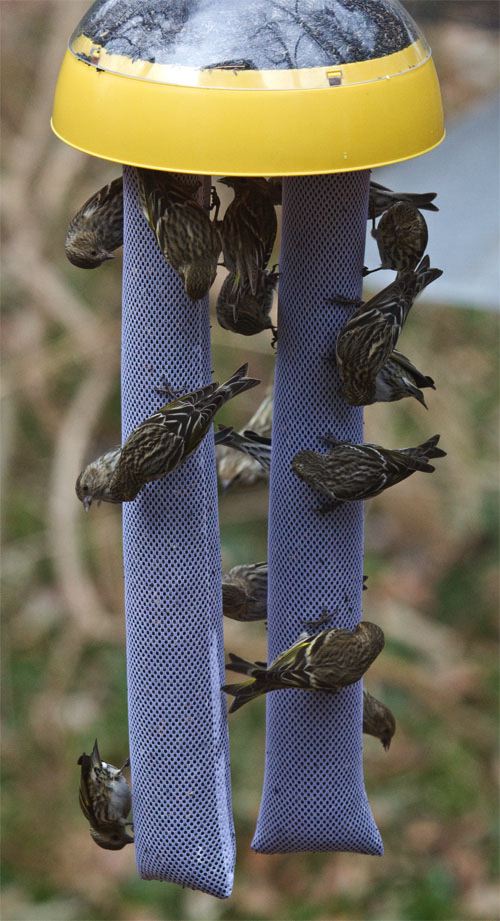
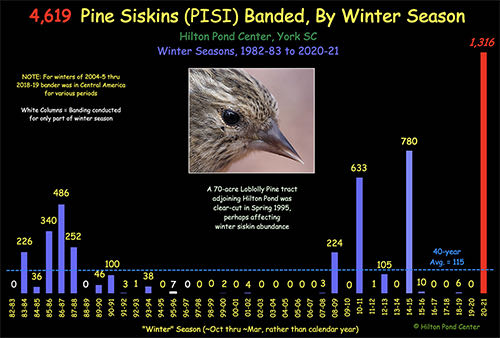
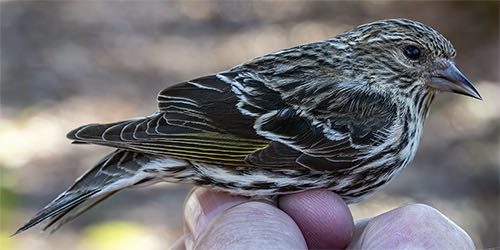
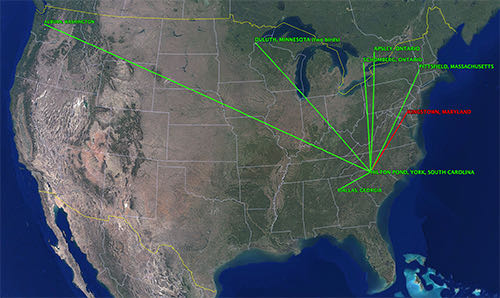

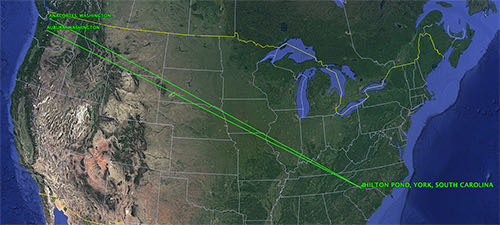












 Please report your
Please report your